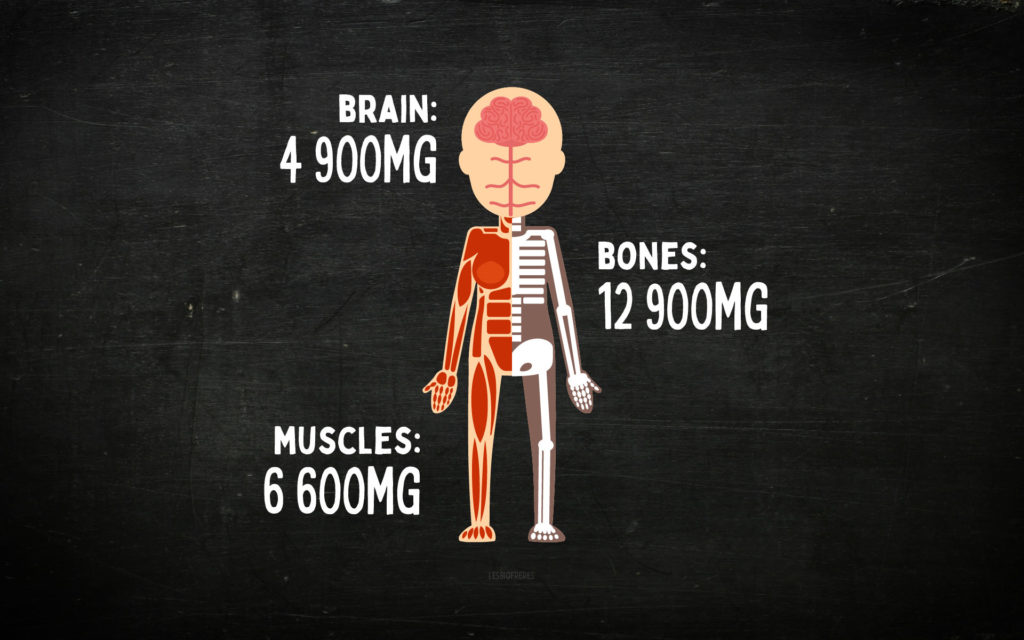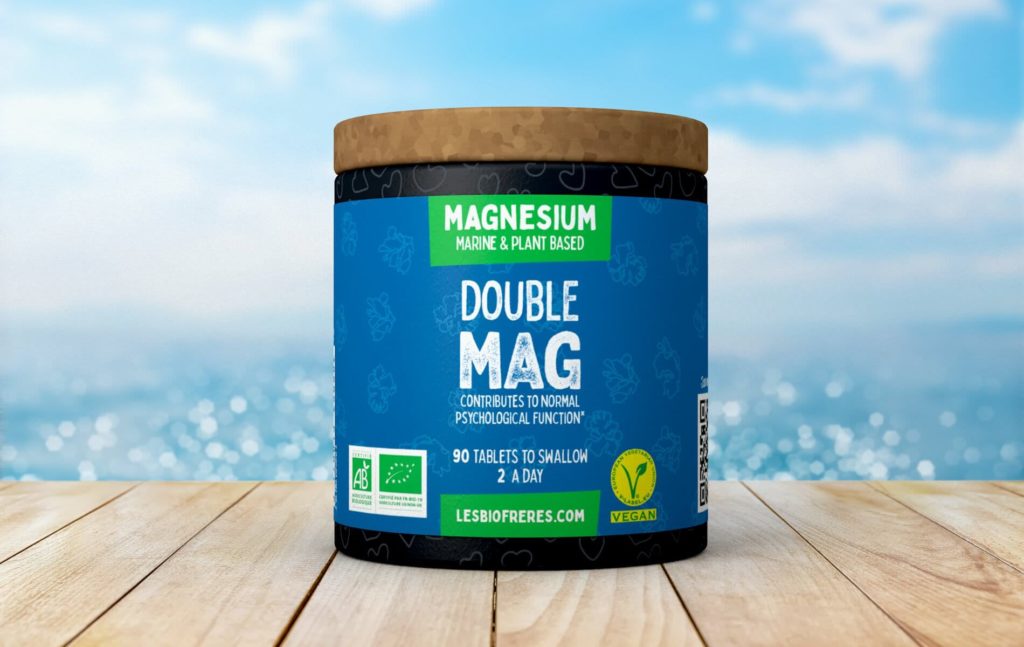Magnesium: a short guide
Reading time: 2 minutes | Written with love by: Alexis
Magnesium plays an essential role in many cellular processes. Want to know more? Alexis tells you all about it!

The role of Magnesium
Magnesium (Mg) is the second most abundant element in our cells, after potassium. It is essential for many cellular processes (read on to find out more…).
Magnesium deficiency
Magnesium deficiency is defined as a blood serum concentration < 0,75 mmol/L.
Magnesium deficiency affects the body as magnesium contributes to:
- normal psychological functions
- the reduction of tiredness and fatigue
- normal muscle function
- normal energy-yielding metabolism
Distribution of magnesium in the body
The most important reservoir of magnesium is the bones (about 60% of total body magnesium), the remaining 40% being located outside the bones, mainly in the skeletal muscles and the brain (12).

12. Yamanaka R et al. Magnesium is a key player in neuronal maturation and neuropathology. Int J Mol Sci. 2019 Jul 12;20(14).
Sources of Magnesium and Absorption
Magnesium is mainly absorbed from the small intestine by a passive mechanism (13,14). This is why we offer DoubleMAG as an easy-to-swallow tablet. There are no significant problems with its absorption.
Magnesium is present in many foods (see table).
However, it is best to avoid processed foods and to steam vegetables for a better absorption. Also the body has no reserves of magnesium. This is why we recommend supplements.
| Magnesium content for selected foods (mg per 100g) | |||
| Seaweed | 2500 | Corn germ | 550 |
| Boiled whelk, Cocoa powder | 410 to 415 | Wheat germ | 400 |
| Split peas | 300 | Brazil nuts | 318 |
| Dried almonds, snails | 250 à 255 | Barley germ | 225 à 230 |
| Peanuts | 175 à 180 | Cashew nuts | 167 |
| Hazel nut, Oats | 145 to 150 | White beans | 140 |
| Walnuts | 129 | Corn kernels | 120 |
| Fresh blackcurrant | 105 | Banana | 45 |
| Dried figs | 77 | Flour | 73 |
| Aubergine, fresh or dried dates, fresh or dried apricot, dried coconut | 60 à 65 | Mineral water | 3 to 11 |
13. Jahnen-Dechent, J.; Ketteler, M. Magnesium basics. Clin. Kidney J. 2012, 5, i3–i14.
14. Graham, L.A.; Caesar, J.J.; Burgen, A.S. Gastrointestinal absorption and excretion of Mg 28 in man. Metabolism 1960, 9, 646–659.
Dietary recommendations for magnesium
Recommendations from the EFSA (European Food Safety Authority) for Magnesium are:
- For infants : 80 mg/day, children 1 to 3 years: 170 mg/day, and 3 to 10 years: 230 mg/day
- Children 10-18 years old: 300 mg/day for boys, 250 mg/day for girls
- For men: 350 mg/day, and women: 300 mg/day
See also
https://www.vegetarisme.fr/comment-devenir-vegetarien/alimentation-equilibree/?highlight=magnésium
Magnesium of marine and plant origin from the Bio Frères

We have created an eco-friendly, vegan and organic magnesium supplement based on sea lettuce and sea water, the two sources for our pure marine magnesium.
Ulva lactuca (sea lettuce) is a species of green seaweed. It was eaten in France during periods of famine. The extraction is done with concentrated sea water.
As pesticides and GMOs are banned in organic farming, DoubleMAG contains only negligible amounts of pesticide residues.
Marine magnesium is often well tolerated but combining it with a plant source it will reduce any digestive intolerance.

Written with love by: Alexis
Alexis is a researcher. True guardian of the temple, he ensures the effectiveness of formulas, compliance and product certifications. He also manages our scientific monitoring and the in-depth articles on our blog.